7 Best Public Domain Video Websites in 2024

Let’s say you are a documentary filmmaker on a shoe-string budget. You can’t afford to recreate that battle from World War 2, nor can you shell out big bucks for real battle scene footage.
Or you may be a blogger, making your first ad campaign for your site. You have no filming or editing expertise, but need to add to your talking-head footage to make your ad standout.
There are millions of video options that you can rip from the internet, so why not use one of those? For starters, you could face a hefty fine for copyright infringement.
How do you find free video footage without the worry of breaking the law? This article will answer all your public domain FAQs and tell you where to get worry-free film clips for your project.
If you’re short on time and want an easy solution to find quality, royalty-free videos for your productions try PowerDirector Video Editor. It comes with millions of stock videos from iStock for free.
- What are Public Domain Videos?
- What is the Difference Between Public Domain and Royalty-Free?
- Best Royalty-Free Video Source
- 7 Best Public Domain Video Websites
- Prelinger Archive
- Pond5
- The National Screen Room – Library of Congress
- The Public Domain Review
- Pexels
- PublicDomainFootage.com
- Vimeo
- Best Royalty-Free Video Footage Library for Your Projects
- Public Domain Video FAQs
- How Do I Find Public Domain Videos?
- Is NASA Footage Public Domain?
- Are YouTube Videos Public Domain?
- Is It Okay to Use Public Domain Videos for Commercial Purposes?
- What Should I Do If I Can’t Find Public Domain Footage for My Project?
- What are Creative Commons licenses?
- Should I Have Any Concerns About Using Public Domain Footage?
- Where Do I Find Public Domain Music for Videos?
- Where Do I Find Public Domain Images?
What are Public Domain Videos?
Public domain videos can be film clips, home movies, commercials, newsreels, or any kind of video footage that is available to anyone, free of charge. These videos have no copyright, either because the copyright expired, or it never had one to begin with.
Sometimes a creator purposefully forgoes copyright protection, intending for their work to be public domain from the start. The Creative Common Zero License (CC0) is attached to these videos and means they can be distributed, copied, and used for commercial or personal use without asking for permission or attribution.
Any video created by a government is considered public domain.
Even if a video is labeled as public domain, there could be caveats. For instance, a famous person should not be used to endorse a product without permission, even if that person is no longer alive. The same applies to using footage from a government entity – while you can use the footage in a commercial, it should not look like the government entity endorses your product. Also, if using a public domain video with art or music that has not been cleared, you could still face legal hassle.
What is the Difference Between Public Domain and Royalty-Free?
Public Domain videos are also called “Copyright-Free” because, as the name suggests, they are free of a copyright. This means they shouldn’t cost anything and they have no restrictions on usage.
However, there are exceptions, like using someone’s image to endorse a product. Also, many sites claiming to be public domain video sites are actually Creative Commons sites, where the videos have a range of licensing agreements attached.
Royalty-Free means there are no ongoing payments (royalties) due to the author. These videos might cost money to use, but only as a one-time payment, instead of a payment every time you use it. There could also be restrictions on usage.
Like public domain, royalty-free media could very well be free of charge and free of limitations, but each one is different.
It is important to read the licensing agreement before using a public domain or royalty-free video.
Best Royalty-Free Video Source
As you can see, choosing a trusted site to source video is crucial.
PowerDirector 365 is an editing software and video creator which contains over 8 million videos, images, and music tracks that can be directly accessed through the software.
PowerDirector uses royalty-free stock from the trusted source – iStock from Getty Images.
And while a monthly subscription to each of these stock sites can cost $30+ a month, they come included for free with a $5.83 per month subscription to PowerDirector.
Best of all, you can use all of the videos found in the PowerDirector library for commercial or personal use – free of charge, free of restrictions, and free of legal hassle.
7 Best Public Domain Video Websites
1. Prelinger Archive
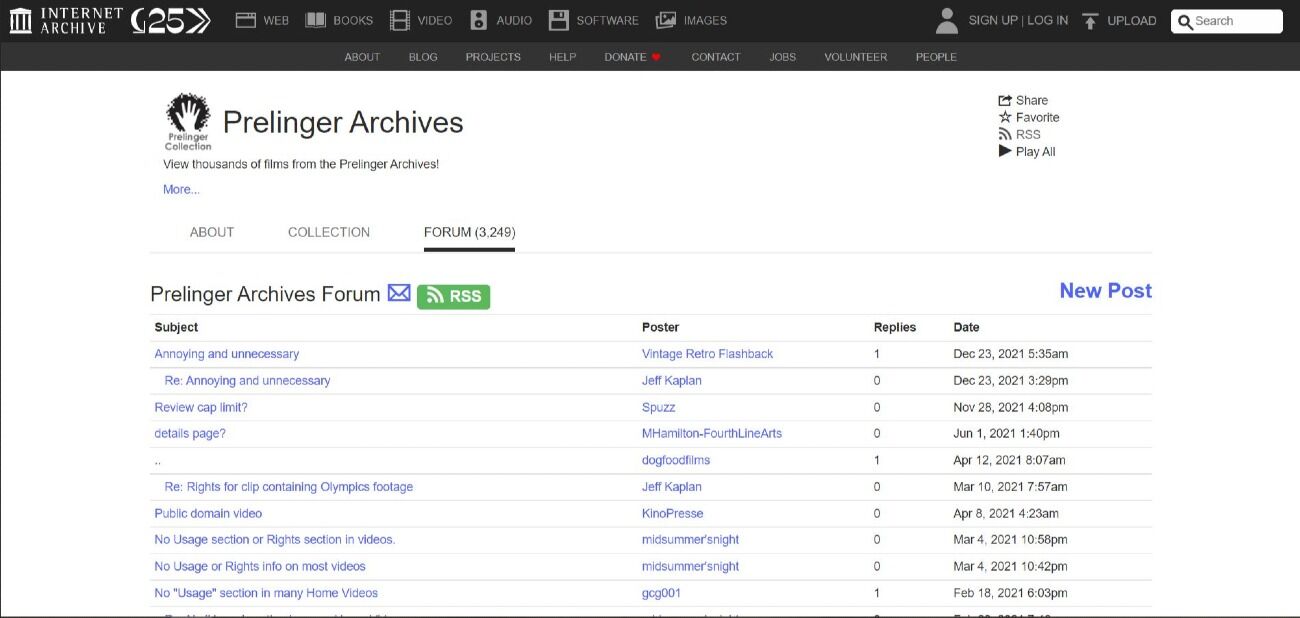
Prelinger Archive is a non-profit video archive with an emphasis on home movies, amateur, and industrial films from before 1950. It has over 17,000 video options and is one of the largest public domain video websites.
In 2002, Prelinger Archive became part of the Library of Congress Motion Picture Broadcasting and Recorded Sound Division and can be found at Archive.org.
Prelinger Archive has digitized versions of vintage videotape and film and many download options.
Only 65% of the videos are actually public domain, and Prelinger Archive does not assume responsibility if you incorrectly use the footage. However, you can pay a fee to license the footage from Getty, in which case Getty would assume responsibility and you would be protected.
2. Pond5
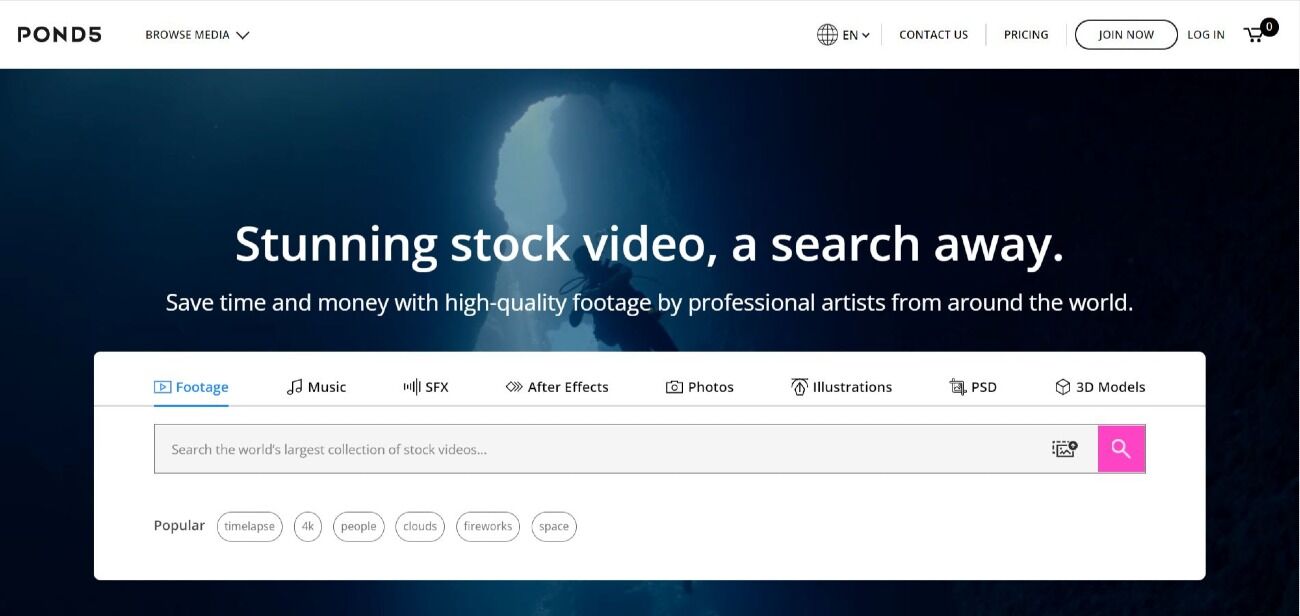
Pond5 is the largest online marketplace for copyright-free historical media.
Browse thousands of old movies, vintage animation, NASA archives, and more in the curated collections in Pond5’s “Public Domain Project.”
Videos are free to download and are free to use, almost completely worry-free (the site states “we believe there are no copyright restrictions”). You do however need a free Pond5 account to save downloaded content to your computer.
Pond5 has useful search tools and filters. You can even upload your own footage and search for only videos that closely match the color or composition.
The videos on this site are all under 2 minutes and most lack audio.
3. The National Screen Room – Library of Congress
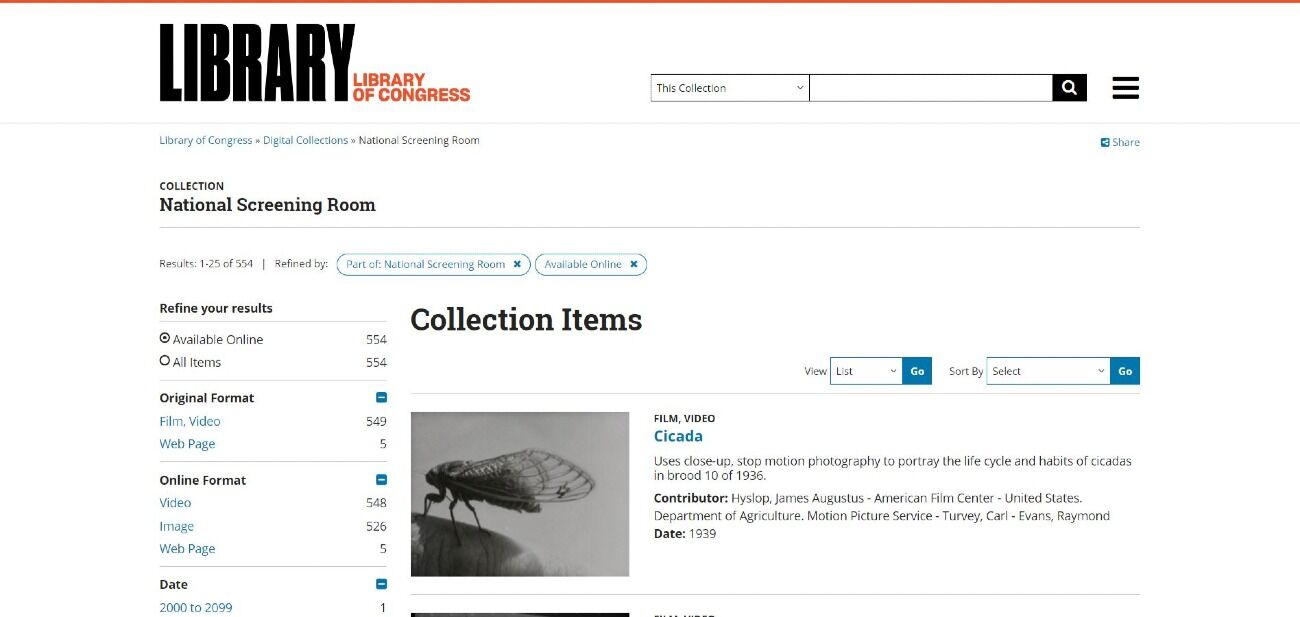
The National Screen Room was created by the Library of Congress National Audio-Visual Conservation Center to make historical and cultural content available around the world.
Most of the works were filmed in the United States in the 20th Century.
The site has a keyword search function with refined search filters like date and location.
The National Screen Room claims a “vast majority” of the videos are copyright-free. Make sure you check for copyrights in case your chosen footage is in the minority.
4. The Public Domain Review
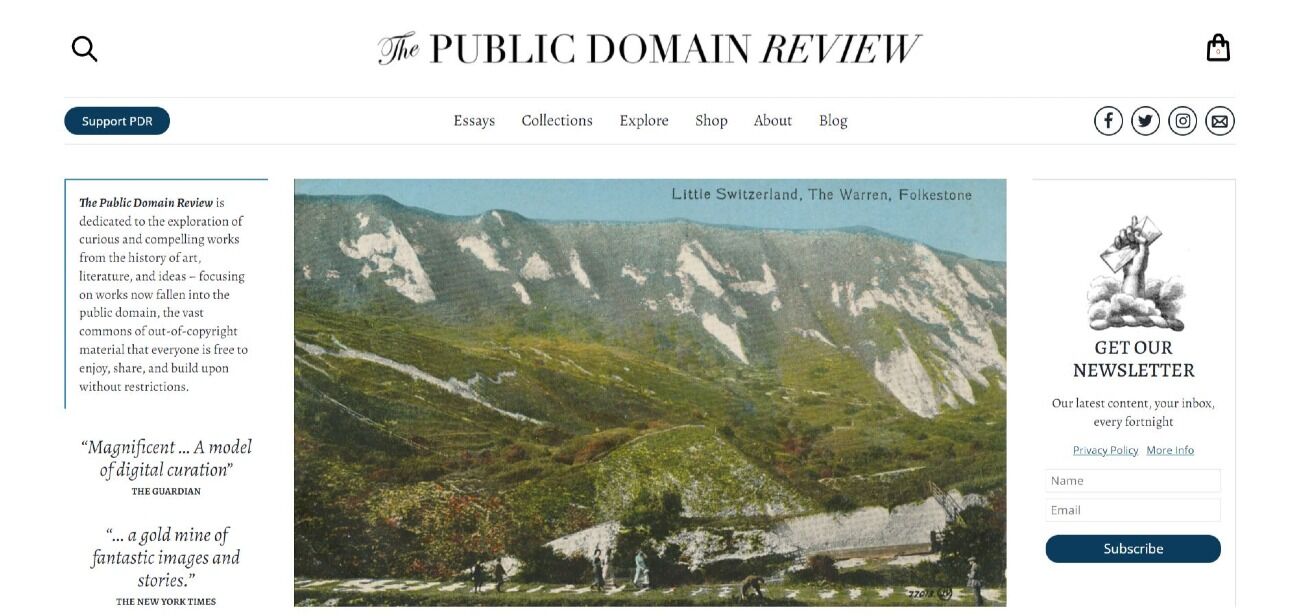
The Public Domain Review focuses on the strange and interesting from the 1890s to the 1950s.
Search through the film collection by epoch, genre, theme, or type.
While the Public Domain Review specializes in vintage films that have fallen out of copyright protection, the site encourages users to investigate before using footage for commercial purposes.
5. Pexels
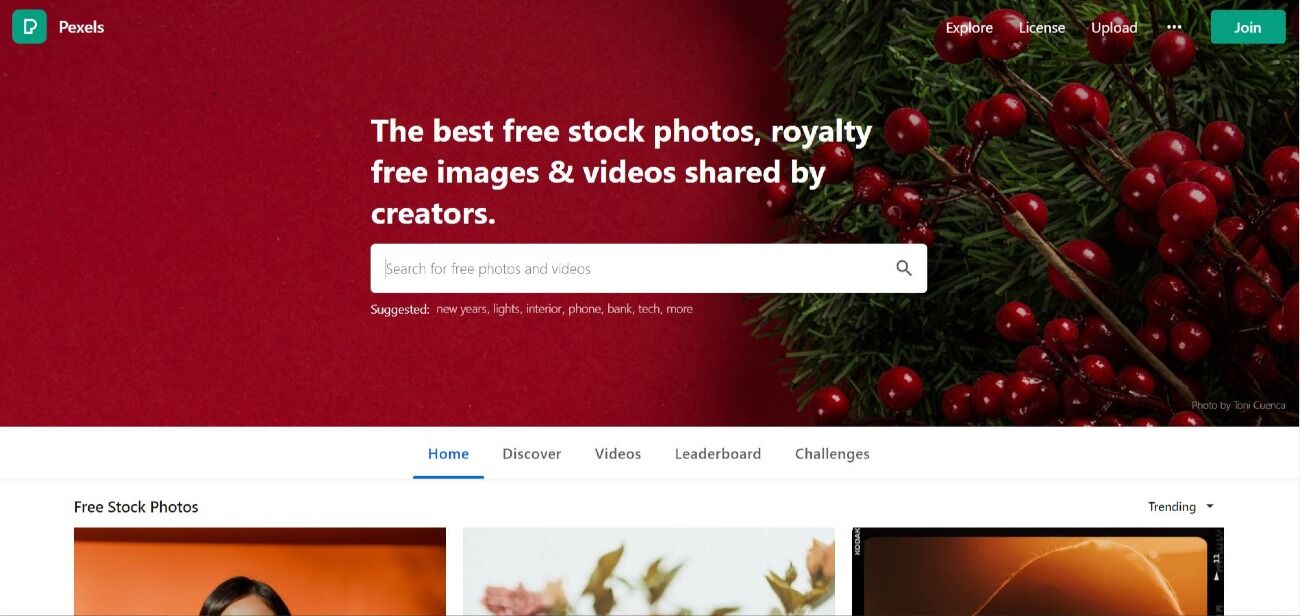
The video collections and keyword search make finding a clip easy, and all come in high definition and high resolution, with different sizes and download options available.
The videos on Pexels are all available with the CC0 license – meaning the creators have waived copyright protection and given them to the site for public use. When you click on a video, it will clearly indicate that it is free to use and no attribution is required (although always appreciated). The Pexels license means that all works are available for commercial use – as long as a recognizable person does not appear in a negative way, and as long as items are modified before being sold.
None of the videos on the site exceed 30 seconds and are best suited for complimentary or filler shots in your project.
6. PublicDomainFootage.com

PublicDomainFootage.com is one of the best-known sites for sourcing historical footage. The site boasts clients such as the BBC, HBO, National Geographic, NBC, and more.
Videos are divided into Archival Footage or Historic Newsreels, with subcategories like Atomic Age, Entertainment, Civil Rights, and Retro Sports.
The site also has a vault containing footage not found on the site. If you can’t find that specific speech or newsreel you are looking for, just send a request and the folks at PublicDomainFootage will track it down.
You can download a clip after paying a one-time fee. You are then free to use the clip as many times as you would like. However, the clips range in price from $10 – $150 so using multiple clips could get pricey. For instance, a 12-second clip of JFK’s famous “Ask Not” speech runs $75.
This site is best used if you need one specific historical clip for your project, especially if you don’t have an HBO budget.
7. Vimeo

This popular video hosting site has a dedicated Public Domain channel.
You can even use a keyword search within each kind of Creative Commons License. Go to the Public Domain Channel and it will list every type of license and what it entails: Attribution – No Derivatives, Attribution – Non-Commercial, Public Domain Dedication, etc. Your search will only pull up videos with that license attached.
The public domain videos on this site have a home-video feel. You can browse the content for free, but to download you will need to pay for a Vimeo account.
Best Royalty-Free Video Footage Library for Your Projects
As you can see, it is hard to find a site that has videos for every content creator’s needs.
Some sites specialize in only vintage footage, others in only present-day. Some are approved for commercial use, some are not. And many claim to have copyright-free content while warning “use at your own risk.”
PowerDirector 365 and the PowerDirector app are a one-stop shop for your stock video needs.
All of the content in the PowerDirector stock library is free to use – no royalties, and no worries. Use footage in a viral ad campaign or post it to social media. The content in PowerDirector will pass any scans done by YouTube for copyrighted material.
The selection is outstanding because PowerDirector has partnered with iStock from Getty Images, one of the largest and most respected stock library on the internet.
Save money by sourcing their content through PowerDirector for only $5.83 per month – and get a cinema-quality editing software along with it.
Public Domain Video FAQs
Try a Google search for public domain videos, or visit one of the sites listed in this article. Make sure you read the fine print on the homepage of any site to double-check usage restrictions, attribution requirements, etc.
NASA has its own image and video library for free use. Because NASA is a government entity, its content is considered public domain, but a long list of rules and guidelines apply.
For instance, using the NASA logo or a video of an astronaut or employee for commercial use is not allowed without consent. Using NASA footage in an advertisement is allowed, as long as NASA itself is not seen to be endorsing a product. For a full list of guidelines, visit “Usage Requirements” at the bottom of the NASA images homepage.
A YouTube video is automatically copyrighted to the person who uploads it. You cannot re-upload a video and claim it to be your own, but you can link to another person’s YouTube video.
However, YouTube does have videos under different Creative Commons Licenses, including public domain. Click on “Creative Commons” under search filters and then type in your keyword search as usual. In the description of the video it will list what kind of CC License is attached.
In theory, a video in the Public Domain is available for commercial use. The only exceptions are videos containing the image of a recognizable person or a government logo, in which case they can’t be seen as endorsing a product or brand.
Many videos on the internet labeled as public domain are actually under a Creative Commons License and usage restrictions apply.
And many videos are mislabeled by the stock sites, which only assume the video has no copyright because they haven’t heard otherwise.
Ignorance is no defense, so make sure to triple-check when using a video for commercial purposes. It is also a good idea to attribute the creator just in case.
Download PowerDirector 365 on your desktop or the PowerDirector app on your smartphone and browse millions of videos, images, graphics, photographs, clip art, music and sounds to find just what you need to finish a project.
All Creative Commons licenses allow creators to maintain their copyright while allowing others to use their work.
There are different levels of Creative Commons Licenses, from “all rights reserved” to “no rights reserved” and everywhere in between. Some of the licenses allow for commercial use and some do not, while others allow for use only if the author is given credit.
There is also the Creative Commons Zero (CC0) License, in which the owner of the work forfeits all rights, including attribution. All works with a CC0 license are considered public domain.
Yes, if the footage is not from a reputable and trusted site, it has a chance of not being public domain.
You are responsible for verifying videos are actually part of the public domain and can face legal consequences if used incorrectly.
There are plenty of public domain music sites out there, but just like the video sites, you have to read the fine print. Many of the sites contain music with a mix of different licenses and usage restrictions.
Royalty-free stock music sites are safer but expensive. They run around $30 a month and can charge more for commercial use.
A video editor like PowerDirector comes with a vast royalty-free stock music library for only $5.83 a month, and gives you the option to edit your video or slideshow with amazing cinematic effects.
For a list of the best sites to find public domain images, check out 7 Best Public Domain Image Websites.





